Ingredients
We use all-natural ingredients sourced from organic farms, harnessing the most healing and nourishing properties nature has to offer. Read more about our amazing ingredients and what they can do for our hardworking bodies.
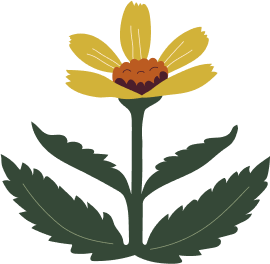 Arnica
Arnica
Plant History & Facts
According to folklore, arnica was first discovered by goat herders who noticed their goats eating the bright yellow flowers when injured. Its medicinal use dates back to the Middle Ages, with Johann Jakob von Bergzabern documenting its effectiveness in treating blunt injuries in the 1600s. Known as "Fallkraut" in German, meaning "fall herb," arnica is prized for its ability to heal wounds from falls.
Products with this ingredient
Taheri M, Amiri-Farahani L. Anti-Inflammatory and Restorative Effects of Olives in Topical Application. Dermatol Res Pract. 2021 Jun 26;2021:9927976.
Oğuz S., Işık S., Güngör A. N. Ç., Şeker M., Ogretmen Z. Protective efficacy of olive oil for sore nipples during nursing. Family Med Community Health. 2014;1:p. 1021.
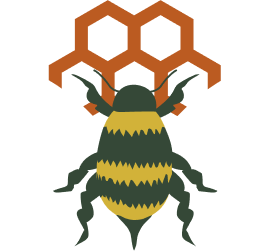 Beeswax
Beeswax
Plant History & Facts
Beeswax is a completely natural substance produced by honeybees. It is secreted by worker bees from specialized wax glands on their abdomens and can vary in color depending on the bees' diet. Beeswax has been used by humans for thousands of years, with evidence of its use in ancient Egypt in cosmetics and ointments.
Products with this ingredient
Kurek-Górecka A, Górecki M, Rzepecka-Stojko A, Balwierz R, Stojko J. Bee Products in Dermatology and Skin Care. Molecules. 2020 Jan 28;25(3):556.
Al-Waili NS. Clinical and mycological benefits of topical application of honey, olive oil and beeswax in diaper dermatitis. Clin Microbiol Infect. 2005 Feb;11(2):160-3.
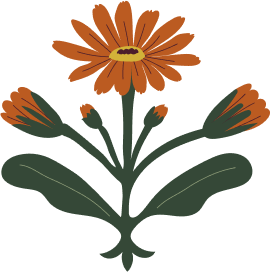 Calendula Flower
Calendula Flower
Plant History & Facts
Calendula, also known as Solis Sponsa or "Bride of the Sun," originates from southern Europe and the eastern Mediterranean. Its vibrant flowers have been used since the first century CE to treat various household ailments. Calendula is well-known for its ability to heal skin issues, reduce inflammation, and soothe cracked skin from breastfeeding.
Products with this ingredient
Givol O, Kornhaber R, Visentin D, Cleary M, Haik J, Harats M. A systematic review of Calendula officinalis extract for wound healing. Wound Repair Regen. 2019 Sep;27(5):548-561.
Moses RL, Prescott TAK, Mas-Claret E, Steadman R, Moseley R, Sloan AJ. Evidence for Natural Products as Alternative Wound-Healing Therapies. Biomolecules. 2023 Feb 27;13(3):444.
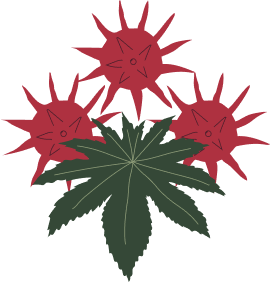 Castor Oil
Castor Oil
Plant History & Facts
Castor seed oil is derived from the seeds of the Ricinus communis plant. It was first used by the Egyptians for skincare, with Cleopatra reportedly using it as part of her beauty rituals. In Ayurvedic medicine, castor seed oil is recommended for therapeutic purposes, including promoting skin healing, reducing scar formation, and rejuvenating the skin.
Products with this ingredient
Vieira C, Evangelista S, Cirillo R, Lippi A, Maggi CA, Manzini S. Effect of ricinoleic acid in acute and subchronic experimental models of inflammation. Mediators Inflamm. 2000;9(5):223-8.
 Cedarwood Oil
Cedarwood Oil
Plant History & Facts
The cedar tree, known as the "Tree of Life" in many cultures, symbolizes strength, protection, and longevity. It’s mentioned frequently in the Bible and was used by the Greeks and Romans in balms and ointments for skin ailments and as an insect repellent. Native Americans valued cedarwood for its antiseptic properties, using it in healing rituals and to treat colds, respiratory conditions, and cleanse the body. Due to their longevity—some species living over 1,000 years—cedars represent strength and resilience.
Products with this ingredient
Lin TK, Zhong L, Santiago JL. Anti-Inflammatory and Skin Barrier Repair Effects of Topical Application of Some Plant Oils. Int J Mol Sci. 2017 Dec 27;19(1):70.
Huang K, Liu R, Zhang Y, Guan X. Characteristics of two cedarwood essential oil emulsions and their antioxidant and antibacterial activities. Food Chem. 2021 Jun 1;346:128970.
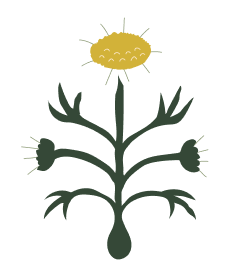 Chamomile Flower
Chamomile Flower
Plant History & Facts
Chamomile, from the Greek word khamimelon meaning "earth apple," is one of the most documented therapeutic plants. Its white, daisy-like flowers contain bioactive compounds that soothe the skin and body, making it ideal for diaper rash. Used by ancient Egyptians, Greeks, and Romans, chamomile treated headaches, swelling, skin conditions, inflammation, infections, digestive issues, and sleep problems. Chamomile tea remains one of the most popular herbal teas worldwide.
Products with this ingredient
Singh O, Khanam Z, Misra N, Srivastava MK. Chamomile (Matricaria chamomilla L.): An overview. Pharmacogn Rev. 2011 Jan;5(9):82-95.
Lee S.H., Heo Y., Kim Y.C. Effect of German chamomile oil application on alleviating atopic dermatitis-like immune alterations in mice. J. Vet. Sci. 2010;11:35–41.
Srivastava JK, Shankar E, Gupta S. Chamomile: A herbal medicine of the past with bright future. Mol Med Rep. 2010 Nov 1;3(6):895-901.
 Coconut Oil
Coconut Oil
Plant History & Facts
Native to Southeast Asia, coconuts have been a vital part of local cultures for centuries, providing food and medicine. Coconut oil, rich in medium-chain fatty acids like lauric acid, has antimicrobial properties that help fight viruses and bacteria. When applied topically, virgin coconut oil also has anti-inflammatory effects and supports skin barrier repair, making it an excellent choice for protecting and soothing the skin.
Products with this ingredient
Varma SR, Sivaprakasam TO, Arumugam I, Dilip N, Raghuraman M, Pavan KB, Rafiq M, Paramesh R. In vitro anti-inflammatory and skin protective properties of Virgin coconut oil. J Tradit Complement Med. 2018 Jan 17;9(1):5-14.
 Organic Cotton
Organic Cotton
Plant History & Facts
Cotton has been cultivated for over 7,000 years in regions like the Indus Valley, Egypt, and the Americas, with evidence of its use dating back to 5000 BCE. Organic cotton products are free from the chemical residues found in conventional cotton, reducing the risk of skin irritation and allergies. Additionally, organic farming practices help protect the environment and reduce farmers' exposure to toxic substances.
Products with this ingredient
Mori M, Praticò A, Villa R, Buzzella A, Vicini R, Busoli Badiale S, Pastoris O, Angelinetta C, Barbieri Carones M. Evaluation of safety and skin tolerability of organic cotton pads in case of irritative vulvitis. Minerva Ginecol. 2018 Dec;70(6):729-737.
 French Green Clay
French Green Clay
Plant History & Facts
Ancient civilizations like the Egyptians, Greeks, and Romans used French green clay to treat skin ailments and digestive disorders. The clay’s green color comes from decomposed plant material and iron oxide. Its unique mineral composition includes montmorillonite, magnesium, calcium, potassium, dolomite, silica, manganese, phosphorus, silicon, copper, and selenium.
Products with this ingredient
Williams LB, Haydel SE. Evaluation of the medicinal use of clay minerals as antibacterial agents. Int Geol Rev. 2010 Jul 1;52(7/8):745-770.
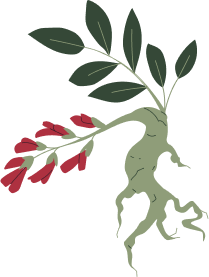 Licorice Root
Licorice Root
Plant History & Facts
The Greek physician Hippocrates used licorice as a remedy for a variety of ailments, particularly for treating sore throats and digestive issues. It was also popular in Roman times, where it was consumed for its soothing properties. Licorice plants can live for up to 20 years in the wild, continuing to produce roots that are used in herbal remedies and traditional medicine.
Products with this ingredient
Yokota T, Nishio H, Kubota Y, Mizoguchi M. The inhibitory effect of glabridin from licorice extracts on melanogenesis and inflammation. Pigment Cell Res. 1998 Dec;11(6):355-61.
Purnamawati S, Indrastuti N, Danarti R, Saefudin T. The Role of Moisturizers in Addressing Various Kinds of Dermatitis: A Review. Clin Med Res. 2017 Dec;15(3-4):75-87.
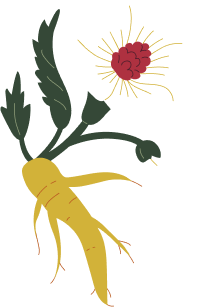 Marshmallow Root
Marshmallow Root
Plant History & Facts
Marshmallow root, used for over 2,000 years in traditional medicine, comes from the Althaea officinalis plant, native to marshy areas. Known for its high mucilage content, it soothes and protects irritated skin and mucous membranes, helping retain moisture and prevent dryness. Its anti-inflammatory properties also reduce swelling and redness, making it ideal for soothing skin, including cracked nipples.
Products with this ingredient
Naseri V, Chavoshzadeh Z, Mizani A, Daneshfard B, Ghaffari F, Abbas-Mohammadi M, Gachkar L, Kamalinejad M, Jafari Hajati R, Bahaeddin Z, Faghihzadeh S, Naseri M. Effect of topical marshmallow (Althaea officinalis) on atopic dermatitis in children: A pilot double-blind active-controlled clinical trial of an in-silico-analyzed phytomedicine. Phytother Res. 2021 Mar;35(3):1389-1398.
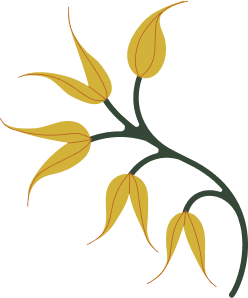 Oat Oil
Oat Oil
Plant History & Facts
Oats have been used since ancient times for both skincare and food, gaining popularity in medieval times for their skin benefits. Rich in avenanthramides, oats offer antioxidant and anti-inflammatory properties, while their beta-glucans help strengthen the skin’s barrier and lock in moisture. Oat oil soothes irritation, making it ideal for sensitive skin, eczema, and psoriasis, and it’s one of nature’s best moisturizers.
Products with this ingredient
Chon SH, Tannahill R, Yao X, Southall MD, Pappas A. Keratinocyte differentiation and upregulation of ceramide synthesis induced by an oat lipid extract via the activation of PPAR pathways. Exp Dermatol. 2015 Apr;24(4):290-5.
Reynertson KA, Garay M, Nebus J, Chon S, Kaur S, Mahmood K, Kizoulis M, Southall MD. Anti-inflammatory activities of colloidal oatmeal (Avena sativa) contribute to the effectiveness of oats in treatment of itch associated with dry, irritated skin. J Drugs Dermatol. 2015 Jan;14(1):43-8. PMID: 25607907.
Diluvio L, Dattola A, Cannizzaro MV, Franceschini C, Bianchi L. Clinical and confocal evaluation of avenanthramides-based daily cleansing and emollient cream in pediatric population affected by atopic dermatitis and xerosis. G Ital Dermatol Venereol. 2019 Feb;154(1):32-36.
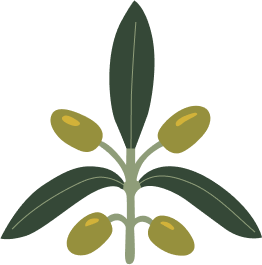 Olive Oil
Olive Oil
Plant History & Facts
Olive trees have been cultivated for over 6,000 years and were used by the ancient Greeks in rituals, cooking, and skincare. Olive oil, a powerful humectant and moisturizer, forms a protective layer on the skin, improving hydration, elasticity, and barrier integrity. Rich in antioxidants like oleocanthal and polyphenols, it promotes skin healing and protects against oxidative stress. Studies show olive oil-based creams outperform corticosteroids for treating atopic dermatitis and improve skin hydration in infants when applied daily.
Products with this ingredient
Taheri M, Amiri-Farahani L. Anti-Inflammatory and Restorative Effects of Olives in Topical Application. Dermatol Res Pract. 2021 Jun 26;2021:9927976.
Oğuz S., Işık S., Güngör A. N. Ç., Şeker M., Ogretmen Z. Protective efficacy of olive oil for sore nipples during nursing. Family Med Community Health. 2014;1:p. 1021.
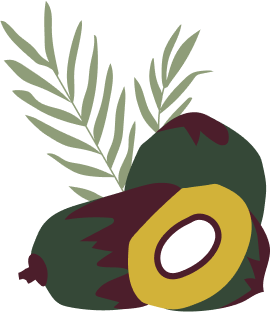 Palm Oil
Palm Oil
Plant History & Facts
The oil palm has been a vital part of West African cultures for thousands of years, with traditional methods of hand-processing the fruit to extract oil for both culinary and medicinal uses. In 1898, the B.J. Johnson Soap Company introduced "Palmolive" soap, blending palm and olive oils. The product became so popular that the company rebranded as Palmolive. Rich in tocotrienols (a form of Vitamin E) and other phytonutrients, palm oil offers antioxidant properties and also helps moisturize and nourish the skin. We use only ethically sourced, organic palm oil.
Products with this ingredient
Lin TK, Zhong L, Santiago JL. Anti-Inflammatory and Skin Barrier Repair Effects of Topical Application of Some Plant Oils. Int J Mol Sci. 2017 Dec 27;19(1):70.
 Sea Buckthorn
Sea Buckthorn
Plant History & Facts
Sea buckthorn is a bright orange berry that has been used for over 1,000 years in traditional Chinese, Tibetan, and Mongolian medicine. It was prized for its ability to treat wounds, heal the skin, and improve overall health. The ancient Greeks believed the plant was linked to horses, as it was thought to enhance their coat and vitality, which is why it was named hippophae—from the Greek word hippos (horse). Sea buckthorn is prized for its nourishing and healing properties.
Products with this ingredient
Liu X, Yuen M, Yuen T, Yuen H, Wang M, Peng Q. Anti-skin aging effect of sea buckthorn proanthocyanidins in D-galactose-induced aging mice. Food Sci Nutr. 2023 Dec 7;12(2):1082-1094.
Balkrishna A, Sakat SS, Joshi K, Joshi K, Sharma V, Ranjan R, Bhattacharya K, Varshney A. Cytokines Driven Anti-Inflammatory and Anti-Psoriasis Like Efficacies of Nutraceutical Sea Buckthorn (Hippophae rhamnoides) Oil. Front Pharmacol. 2019 Oct 11;10:1186.
 Chlorella Seaweed
Chlorella Seaweed
Plant History & Facts
Chlorella is often referred to as a “superfood” due to its incredibly rich nutrient profile. It is a complete protein source, containing all nine essential amino acids, and is also high in vitamins (especially B12), minerals, and chlorophyll. Chlorella has one of the highest concentrations of chlorophyll in the plant kingdom, which can play a role in detoxifying the body, and is known for its high levels of essential fatty acids, which help to hydrate the skin and promote the repair of damaged skin barriers.
Products with this ingredient
Feng ST, You CT, Pan ZK, Gao WY, Wang DD, Hu LL. The anti-aging effects of Chlorella polysaccharide extract in Caenorhabditis elegans. Nat Prod Res. 2024 Jun 28:1-6.
 Sodium Hydroxide
Sodium Hydroxide
History & Facts
The use of alkaline substances like lye in soap-making dates back to ancient civilizations, with the Babylonians and Egyptians using early forms of lye in their soap recipes. The word "lye" comes from Old English, meaning "wash stuff," reflecting its long history in cleansing. Today, sodium hydroxide (a type of lye) is essential in soap production because it turns fats and oils into soap through a chemical reaction called saponification. During this process, sodium hydroxide is fully removed from the final soap bar, leaving only the soap itself.
Products with this ingredient
 Sunflower Wax
Sunflower Wax
Plant History & Facts
Sunflower wax, derived from sunflower seeds, has a long history of medicinal use. It acts as an emollient, creating a protective, non-sticky layer on the skin that helps lock in moisture and improve texture. Rich in essential fatty acids, vitamins, and antioxidants, sunflower wax nourishes the skin, providing added benefits for a healthier, smoother appearance.
Products with this ingredient
Maru, Avish, Lahoti, Swaroop. 2018/11/01. Formulation and Evaluation of Moisturizing Cream Containing Sunflower Wax, International Journal of Pharmacy and Pharmaceutical Sciences, Volume 10.
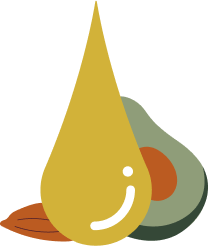 Vitamin E
Vitamin E
History & Facts
Naturally derived Vitamin E (tocopherol) from rosemary leaf extract offers several benefits for skincare. It helps accelerate the skin’s healing process by reducing inflammation and promoting tissue repair. Vitamin E can also lighten dark spots and even out skin tone by minimizing oxidative damage and controlling melanin production.
Products with this ingredient
Thiele, Jens J. MD1; Hsieh, Sherry N. PhD1; Ekanayake‐Mudiyanselage, Swarna MD1. Vitamin E: Critical Review of Its Current Use in Cosmetic and Clinical Dermatology. Dermatologic Surgery 31(s1):p 805-813, July 2005.
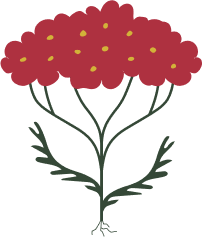 Yarrow Leaf
Yarrow Leaf
Plant History & Facts
The ancient Greeks attributed the plant to the hero Achilles, who is said to have used it to treat wounds in battle. Traditional uses include treating fevers, digestive issues, and wounds, as the plant possesses anti-inflammatory and antiseptic properties. Yarrow is beneficial to various pollinators, including bees and butterflies, making it an important plant for biodiversity.
Products with this ingredient
Saeidnia S, Gohari A, Mokhber-Dezfuli N, Kiuchi F. A review on phytochemistry and medicinal properties of the genus Achillea. Daru. 2011;19(3):173-86. PMID: 22615655; PMCID: PMC3232110.
 Zinc Oxide
Zinc Oxide
Facts & Information
Zinc oxide acts as a barrier, protecting the skin from irritants such as moisture and enzymes found in urine and feces. Its astringent properties help reduce inflammation and promote healing. Zinc oxide exhibits antimicrobial activity, helping prevent bacterial infections in compromised skin areas.
Products with this ingredient
Gupta M, Mahajan VK, Mehta KS, Chauhan PS. Zinc therapy in dermatology: a review. Dermatol Res Pract. 2014;2014:709152.










